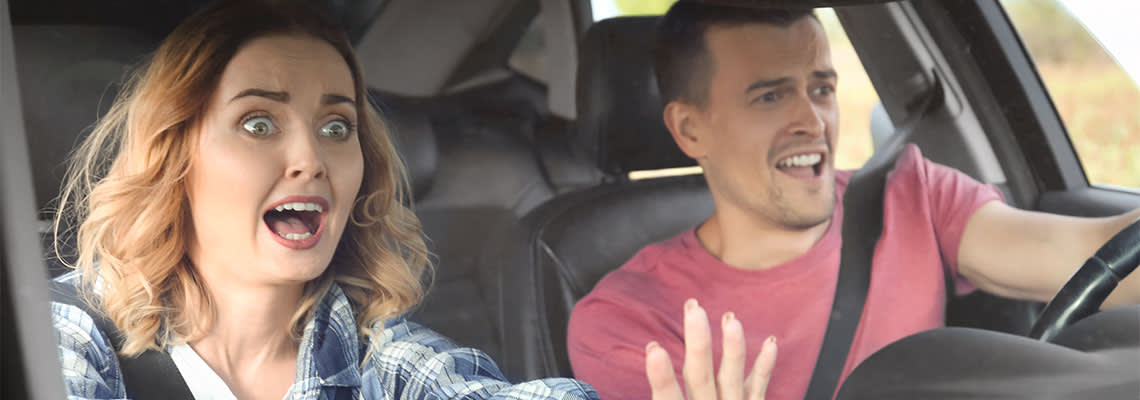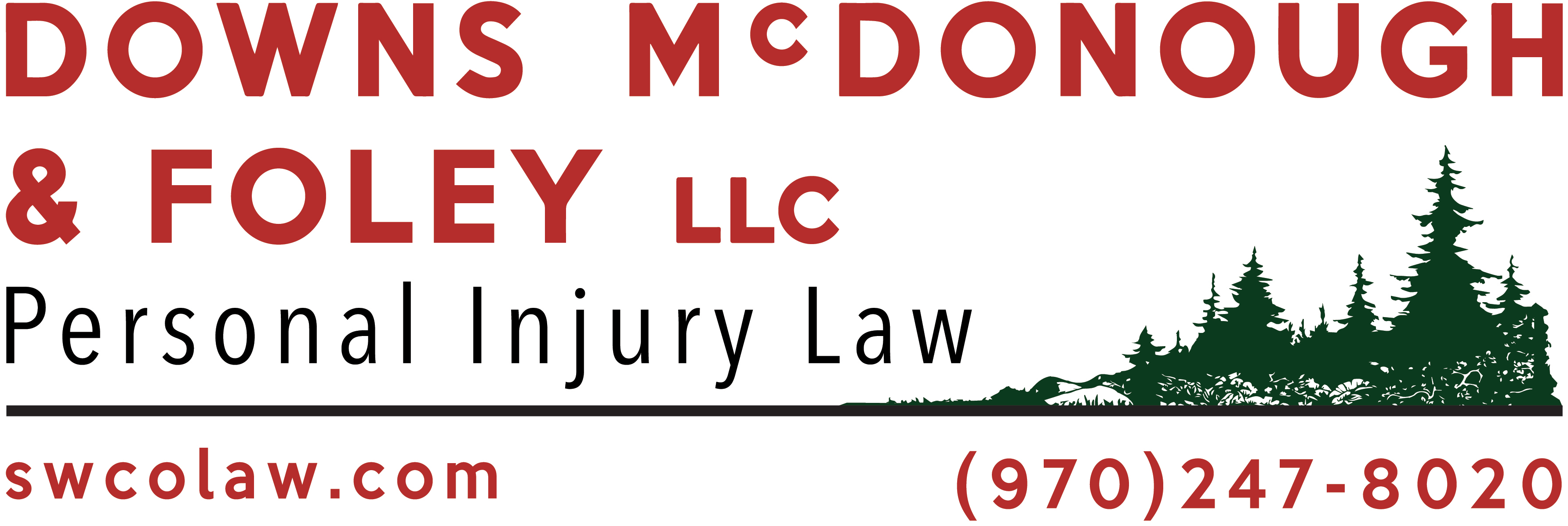
What Makes Rideshare Accident Claims Different From Regular Car Accidents?
Getting into a car accident is stressful under any circumstances. But when the crash involves a rideshare vehicle—whether you were a passenger, another driver, or even a pedestrian—it can feel overwhelming.
You're not just dealing with injuries, medical bills, and missed work; you're now faced with figuring out who’s responsible when multiple parties are involved, including a multibillion-dollar rideshare company. It's an experience no one wants to go through, and we know how difficult it can be.
At Downs McDonough & Foley, LLC, we help clients make sense of what comes next after a rideshare accident. Located in Durango, Colorado, our firm serves Durango, Telluride, Pagosa Springs, Cortez, and the Four Corners region.
Whether the at-fault party was a rideshare driver or you were injured while riding in one, we work to protect your rights and pursue fair compensation. Rideshare accident claims aren’t like regular car accidents, and understanding those differences can make all the difference in your recovery.
Reach out to us if you’ve been involved in a rideshare crash—don’t go through this alone.
Rideshare Accidents Add Another Layer of Responsibility
Unlike typical car accidents, where only the drivers’ personal auto policies are in play, rideshare crashes introduce a third party: the rideshare company. This added involvement raises questions about liability, insurance coverage, and the driver's status at the time of the crash.
Rideshare drivers operate under different insurance coverage depending on their status:
App off: If the rideshare driver isn’t using the app at the time of the accident, their personal insurance applies.
App on, waiting for a ride: When the app is active, but the driver hasn’t accepted a ride yet, limited coverage provided by the rideshare company may apply.
On a trip or when picking up a rider: Once a ride is accepted, the rideshare company's higher coverage usually kicks in, which can include up to $1 million in liability coverage.
That status switch changes everything. Determining what phase the driver was in at the time of the crash is key—and that’s often not something the average person has easy access to without help.
Insurance Coverage Varies Based on Driver Status
In most standard car accidents, you’re dealing with just one auto insurance policy per driver. With rideshare accidents, multiple policies may be in effect, and the amount of coverage can vary significantly depending on the timing.
Key differences in coverage include:
When the app is off: The driver’s personal insurance is the only policy available.
When the app is on but no ride is accepted: Limited liability coverage from the rideshare company may apply (often up to $50,000 per person and $100,000 per accident for companies like Uber).
When a ride has been accepted or is in progress: The rideshare company, according to Colorado Revised Statutes § 40‑10.1‑604, typically provides up to $1 million in liability coverage, plus contingent collision coverage.
These coverage amounts sound promising, but getting access to them can be another story. The rideshare companies don’t always readily accept fault, and their insurers may try to minimize your injuries or shift blame.
Multiple Parties May Be Liable
One reason rideshare cases are more complicated is that liability can be shared among multiple parties. It’s not always just the driver who’s responsible—other factors can come into play, depending on the circumstances.
Potentially responsible parties include:
The rideshare driver: If the driver was careless or reckless, they could be directly responsible.
Another driver: If a third-party driver caused the accident, their insurance may be the primary source of compensation.
The rideshare company: In some cases, Uber or Lyft could be held responsible, particularly if they failed to screen or supervise drivers properly.
Vehicle manufacturers or mechanics: If a defective part contributed to the crash, other entities might be pulled into the case.
Due to these layers, identifying liability requires more investigation than a standard crash would. You may need access to app data, phone records, or even vehicle diagnostics—things that aren’t easy to get without legal backing.
Rideshare Companies Distance Themselves From Their Drivers
One of the most significant differences in rideshare-related crashes is how companies like Uber and Lyft classify their drivers. They label them as independent contractors, not employees. That classification can affect how much responsibility the company takes after an accident.
This legal distinction means rideshare companies often argue they aren’t liable for a driver’s actions. They’ll say, “We just provide the platform,” and try to shift the blame elsewhere—even when their driver was actively transporting a passenger.
This creates a unique challenge for injury victims. Unlike a trucking company, which might be clearly responsible for a crash caused by one of its drivers, rideshare companies attempt to create a buffer between themselves and liability.
But that doesn’t mean they’re untouchable—far from it. With the right legal approach, it’s possible to hold them accountable in Colorado courts.
Gathering Evidence Is More Complicated
Proving fault in a regular car accident often depends on police reports, witness statements, and physical evidence from the scene. In a rideshare crash, those basics still apply—but they’re rarely enough on their own. You may need:
App data and ride records: This can indicate whether the driver was logged in, on a trip, or between rides.
Phone records: These help prove whether the driver was distracted.
GPS data: To establish the route and time of the crash.
Driver background checks or prior violations: To show whether the rideshare company should’ve been more cautious in approving them.
Getting this kind of evidence isn’t straightforward. Rideshare companies are unlikely to hand it over willingly unless a court requires them to do so. That’s why working with a law firm familiar with how these companies operate in Colorado is so important.
Injuries Are Often More Serious
Rideshare accidents can result in serious injuries, particularly when passengers are involved. People often ride in the back seat without wearing seatbelts, and many trips occur at night or during high-traffic hours, which increases the risk of severe crashes.
Common injuries we see in rideshare accident cases:
Head and brain injuries: From hitting windows or headrests
Back and neck injuries: Including whiplash, disc issues, and spinal trauma
Broken bones and fractures: Especially arms, wrists, and ribs
Soft tissue injuries: Which can take weeks or months to heal fully
Psychological injuries: Including PTSD, anxiety, or depression after a traumatic crash
These injuries often require longer treatment and more follow-up care than typical accident injuries. That can drive up medical bills and lost wages—costs that should be part of any fair settlement.
Rideshare Crashes Involve More Legal Deadlines and Notices
If you’re injured in a rideshare crash in Colorado, you may have additional reporting requirements beyond just filing an insurance claim. Certain types of claims require advanced notice to be legally valid.
Here are a few key deadlines to keep in mind:
Statute of limitations: In Colorado, you typically have three years to file a car accident injury claim—but the sooner you act, the better.
Insurance company deadlines: These vary, but most insurers want notice of a claim within days or weeks, not months.
Preservation of evidence: If important data (like rideshare app records) isn’t requested early, it can be deleted or lost.
Failing to meet these deadlines can hurt your case. That’s why it's smart to speak with a legal representative as soon as possible.
What You Can Do After a Rideshare Accident
Your actions in the minutes, hours, and days following a crash can significantly impact your case. Whether you were a passenger in an Uber or driving your own vehicle when you were hit, there are steps you can take to protect your rights.
What to do after a rideshare accident:
Get medical attention: Even if you feel okay, it's essential to get checked out. Some injuries don’t show up right away.
Call the police: Always file a report. It can help clarify what happened and establish fault.
Take photos and videos: Document vehicle damage, injuries, road conditions, and any relevant signs.
Obtain contact information: Collect names, phone numbers, and insurance details from all drivers and witnesses.
Report the crash to the rideshare app: If you were a passenger, make sure the company is notified.
Talk to a lawyer before accepting any settlement: Once you accept money from an insurance company, your case may be closed for good.
While these steps don’t guarantee success, they bolster your position if legal action becomes necessary.
Work With a Skilled Car Accident Lawyer
If you've been injured in a rideshare accident, you shouldn’t have to figure out the legal process on your own. Whether it happened in Durango, Telluride, Pagosa Springs, Cortez, or anywhere in the Four Corners (including New Mexico, Arizona, and Utah), having legal support can make all the difference in how your case turns out.
At Downs McDonough & Foley, LLC, we help injured people pursue full compensation for medical bills, lost wages, and pain and suffering. We know how rideshare companies operate and how to hold them accountable under Colorado law. You deserve someone who’ll fight for you, not just settle for whatever the insurance company offers. Contact us today for a free consultation and let us help you move forward.

